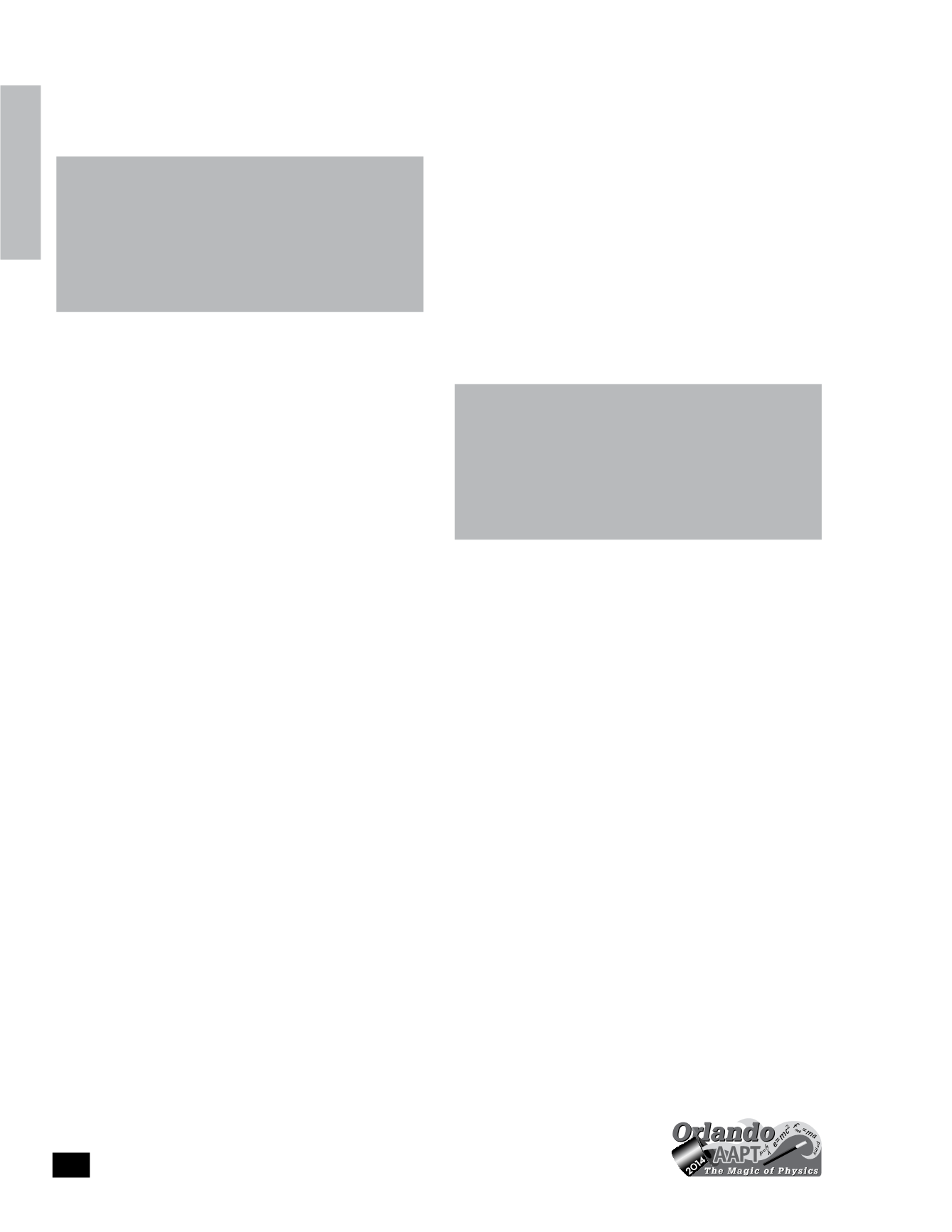
46
short exposure photos can cost anywhere from $50 to a few hundred
dollars depending on how much equipment you already have. In this
talk we outline the techniques that can be used to take astrophoto-
graphs with as little (additional) money as possible focusing on using
iPhones, DSLRs and inexpensive web cams.
Session BA: SPS Research and
Outreach II
Location: Salon 4
Sponsor: AAPT/SPS
Date: Sunday, January 5
Time: 4:30–5:30 p.m.
Presider: Toni Sauncy
BA01:
4:30-4:40 p.m. Aerodynamics of a Vehicle Head
Contributed – Priyanka Kompella,* Issaquah High School, Issaquah, WA
98027;
Allison Hsu, Issaquah High School
Using a wind tunnel to detect the amount of drag with which each
cone is affected, we will calculate what cone is most efficient for each
sub-sonic speed. The type of cone head will be manipulated by (1)
changing its angle at the tip and (2) the shape of the cone’s surface
(curved vs. flat). We can determine optimal velocity by observing the
drag force on the cone and how the air moves around it. Through this
experiment, we will be able to determine the most economical shape
of a vehicle head for different speeds.
*Sponsored by Thomas Haff
BA02:
4:40-4:50 p.m. The ‘Plane Out’ of a Wakeboard
Boat
Contributed – Hayley B. Alexander,* Issaquah High School, Issaquah,
WA 98027;
Matthew S. Hanna, Issaquah High School
As the velocity of the boat increases, the angle of the bow and wake
increase to a maximum. As the velocity continues to increase the boat
then begins to “plane out.” We have developed measuring apparatuses
to measure the angle of the wake, the angle of the bow, and RPMs to
discover if there is a mathematical correlation between these mea-
sured variables. Come hop on our virtual boat!
*Sponsored by Thomas Haff
BA03:
4:50-5 p.m. Hang Glider Control Bar Placement’s
Impact on Glide Ratio
Contributed – Katherine Chun,* Issaquah High School, Issaquah, WA
98027;
Catie Ball, Sabreena Rajan, Issaquah High School
A hang glider’s descent is commonly measured as a glide ratio-- the
ratio of horizontal distance traveled compared to vertical distance
traveled. The purpose of this experiment is to find the maximum glide
ratio by changing the glider’s control bar position along the keel. By
moving the control bar forward and backward along the keel, the
position of weight on the glider is also moved along the keel. When
the glider is dropped from a constant height, with the weight in dif-
ferent positions, the glide ratio changes depending on the horizontal
distance traveled. This experiment and subsequent research seeks to
find optimal positions of weight on a glider and to fix other variable
elements of a glider’s design in order to determine the glider with the
greatest glide ratio.
*Sponsored by Thomas Haff
BA04:
5-5:30 p.m. Sensors and Measurement: The 2013
Science Outreach Catalyst Kit (SOCK)
Invited – Caleb L. Heath, University of Arkansas, Fayetteville, AR 72703;
Nicole Quist, Oregon State University
A SOCK is a collection of materials and activities designed to be a
self-contained outreach experience. They are produced by Society of
Physics Students summer interns and provided to campus chapters
(around 25 each year) in need of outreach materials to use with local
classrooms or in other community outreach programs. Each year’s
SOCKs are organized around a theme. The National Institute of Stan-
dards and Technology (NIST) partnered with SPS on the 2013 SOCK
with its theme of sensors and measurement. Though the detection and
quantification of phenomena are essential to scientific inquiry, these
topics have never before been the focus of a SOCK. Standards and
measurement are explored through a variety of hands-on activities,
while custom-made electronics (and optional smartphone integra-
tion) allow for cost-effective exploration of sensor technology. This
talk will introduce the SOCK, and include demonstrations of our
most popular activities.
Session BB: Pre-College PER
Location: Salon 11
Sponsor: Committee on Research in Physics Education
Co-Sponsor: Committee on Physics in High Schools
Date: Sunday, January 5
Time: 4:30–6 p.m.
Presider: Dan Crowe
BB01:
4:30-5 p.m. Assessing Whether and How
Professional Development Affects Teachers’
Classroom Practices
Invited – Andrew Elby, University of Maryland, College Park, MD 20742-
1115;
Ayush Gupta, Jennifer Richards, University of Maryland
PER-informed professional development with practicing teachers
often focuses on deepening content knowledge and/or introducing
specific curricula and pedagogical techniques.
1,2
By contrast, other
professional development for practicing teachers focuses less on
content and more on helping teachers rethink what counts as learning
and teaching physics (or science).
3
Assessing such projects is tricky;
it’s hard to determine whether and how the professional development
affects teachers’ classroom practices. Observation rubrics like RTOP
4
can detect changes toward more student-centered instruction but
are not designed to assess the quality of classroom discourse in a nu-
anced way. In this talk, we discuss our halting first efforts to trace the
effects of specific aspects of teachers’ experiences in our professional
development program to changes in their classroom practices. Our
big generalization is that generalizations are misleading; we observed
large variations in what teachers took away from our program and
how it affected their teaching.
1. L. C. McDermott, P. S. Shaffer, and C. Constantinou,
Physics Education
35
,
411 (2000).
2. R. E. Scherr, H. G. Close, E. W. Close, and S. Vokos,
Physical Review Special
Topics-Physics Education Research
8
, 020115 (2012).
3. D. Hammer, F. Goldberg, and S. Fargason,
Review of Science, Mathematics and
ICT Education
6
, 51 (2012).
4. M. Piburn, D. Sawada, J. Turley, K. Falconer, R. Benford, I. Bloom, and E.
Judson, Tempe, Arizona: Arizona Collaborative for Excellence in the Prepara-
tion of Teachers (2000).
BB02:
5-5:30 p.m. The Enactment of Content Knowledge
for Teaching Energy During Instruction
Invited – Robert Zisk, Rutgers University, 10 Seminary Pl, New Bruns-
wick, NJ 08901-1281;
Content knowledge for teaching
(CKT) is a practice-based theory of
the professional knowledge that a
person needs in order to be able to
Sunday afternoon


